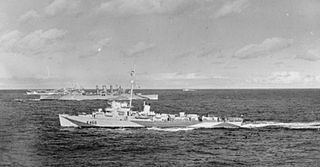
USS Reuben James (DE-153) was a Buckley-class destroyer escort in the United States Navy. She was the second ship named for Reuben James, a Boatswain's Mate who distinguished himself fighting the Barbary pirates.

USS Charles Lawrence (DE-53) was a Buckley-class destroyer escort of the United States Navy, commissioned in 1943. She was converted to a high-speed transport in 1944 and redesignated APD-37. After being decommissioned in 1946, she was finally scrapped in 1965.

USS George W. Ingram (DE-62/APD-43) was a Buckley-class destroyer escort in service with the United States Navy from 1943 to 1947. In 1967, she was transferred to Taiwan, serving as Kang Shan until being scrapped in 1979.

USS Ira Jeffery (DE-63/APD-44), a Buckley-class destroyer escort of the United States Navy, was named in honor of Ensign Ira Weil Jeffery (1918–1941) who was killed in action during the Japanese attack on the Hawaiian Islands while serving aboard the battleship California.

USS Sims (DE-154/APD-50) was a Buckley-class destroyer escort in service with the United States Navy from 1943 to 1946. She was scrapped in 1961.

USS Otter (DE-210), a Buckley-class destroyer escort of the United States Navy, in service from 1944 to 1947. She was finally sunk as a target in 1970.

USS Hubbard (DE-211/APD-53) was a Buckley-class destroyer escort in service with the United States Navy from 1944 to 1946. She was scrapped in 1966.

USS Hayter (DE-212/APD-80) was a Buckley-class destroyer escort in service with the United States Navy from 1943 to 1946. In 1967, she was transferred to South Korea where she served as ROKS Jonnam until 1986.

USS Ahrens (DE-575), a Buckley-class destroyer escort of the United States Navy, was named in honor of Private Edward H. Ahrens (1919–1942), who was killed during the Battle of Tulagi and Gavutu–Tanambogo on 8 August 1942. He was posthumously awarded a Navy Cross.

USS Robert I. Paine (DE/DER-578), a Buckley-class destroyer escort of the United States Navy, was named in honor of Marine Corps Private Robert I. Paine (1923-1942), who was killed in action during the attack on Tulagi on 7 August 1942. He was posthumously awarded the Silver Star.

HMS Bickerton was a Captain-class frigate of the Royal Navy. She served during the World War II as a convoy escort and anti-submarine warfare vessel in the Battle of the Atlantic and was an effective U-boat killer, being credited with the destruction of two U-boats during a service career of just 10 months. Bickerton was lost in action on 22 August 1944.

German submarine U-66 was a Type IXC U-boat of Nazi Germany's Kriegsmarine during World War II. The submarine was laid down on 20 March 1940 at the AG Weser yard at Bremen, launched on 10 October and commissioned on 2 January 1941 under the command of Kapitänleutnant Richard Zapp as part of the 2nd U-boat Flotilla.

HMS Balfour was a Captain-class frigate of the Royal Navy which served during World War II. She was built as a TE (Buckley) type destroyer escort in the United States and delivered to the Royal Navy under the Lend-Lease arrangement.
HMS Bentley was a Captain-class frigate which served during World War II. The ship was named after Sir John Bentley who entered the Royal Navy in 1720. Between 1744 and 1761 he commanded a series of ships and took part in the decisive victory at the Battle of Quiberon Bay in 1759 while commanding a 74-gun third-rate ship of the line HMS Warspite.

USS Gustafson (DE-182) was a Cannon-class destroyer escort in service with the United States Navy from 1943 to 1946. In 1950, she was transferred to the Royal Netherlands Navy where she served as Hr.Ms. Van Ewijck (F808) until 1967. She was scrapped in 1968.

USS Neal A. Scott (DE-769) was a Cannon-class destroyer escort in service with the United States Navy from 1944 to 1946. She was sold for scrapping in 1969.

HMS Conn was a TE ("Buckley") Type Captain class frigate of the Royal Navy. She served during World War II as a convoy escort and anti-submarine warfare vessel in the Battle of the Atlantic and was credited with the destruction of two U-boats during the conflict.

HMS Duckworth (K351) was a Captain-class frigate of the Royal Navy. She served during the Second World War as a convoy escort and anti-submarine warfare vessel in the Battle of the Atlantic and was an effective U-boat killer, being credited with the destruction of five U-boats during the conflict.

HMS Ekins (K552) was a British Captain-class frigate of the Royal Navy that served during World War II. Originally constructed as a United States Navy Buckley class destroyer escort, she served in the Royal Navy from 1943 to 1945.

The second HMS Essington (K353), and the first ship of the name to see service, was a British Captain-class frigate of the Royal Navy in commission during World War II. Originally constructed as a United States Navy Buckley-class destroyer escort, she served in the Royal Navy from 1943 to 1945.




















